Phonics and Reading Schemes
At Brodetsky, we use the Read Write Inc. (RWI) programme to get children off to a flying start with their reading and writing. Children who are read to or read regularly hold the keys to the endless doors that open many new worlds. More importantly, reading will give your child the tools to become an independent life-long learner.
We can achieve this together through:
- Read Write Inc. Phonics, a program to help to your child read at school.
- Encouraging children to develop a love of books by reading to them daily, at home and at school.
- Giving children access to a wide range of literature at school and at home.
What is Read Write Inc?
RWI is a rigorous and structured programme which integrates phonics, comprehension, writing, grammar, punctuation, vocabulary and handwriting. It is carefully structured and designed for pupils in Reception, Year 1 and Year 2. The alphabetic code is taught in a certain order to ensure that children learn to read and write grapheme/phoneme correspondences accurately and fluently. Children learn to read and write sounds in this order:
Once children become speedy at reading the first five sounds taught in Reception, they begin their journey to becoming independent blenders when reading words. We teach them how to use their reading routine (‘Special Friends, Fred Talk, Read the Word’) to read words accurately, build their fluency and become speedy word readers at each stage of the programme. Children then read matched texts, which only contain the sounds that they can read accurately. This means that your child will love bringing home their reading book and showing you what they have been learning in school. We ask that you support them in building their fluency at home by re-reading texts each day to develop their fluency, expression and their understanding of what they are reading.
Implementation
Children in Reception have a daily phonics lesson for 20 minutes in the first half term. They work really hard to learn the first 25 sounds and begin to practice blending sounds to make words. Once they can read words, they will begin to bring home their reading books to practise their reading routine. As the year progresses, phonics lessons increase to 60 minutes by the end of their first year. In each lesson, children will learn/review a sound, read sounds speedily, read real and nonsense words, spell with Fred Fingers, complete reading activities linked to their matched storybook and complete linked writing activities to secure their growing understanding of the alphabetic code.
Your child will start to learn set 1 sounds in Nursery and Reception, some children will be ready to move onto set 2 sounds in Reception. It is important to remember that each child is individual and maybe ready to progress before other children. In Year 1 and 2, your child will continue to progress through set 1,2 and 3. If necessary, phonics lessons and interventions will also continue into Key Stage 2 as appropriate.
Set 1 Sounds
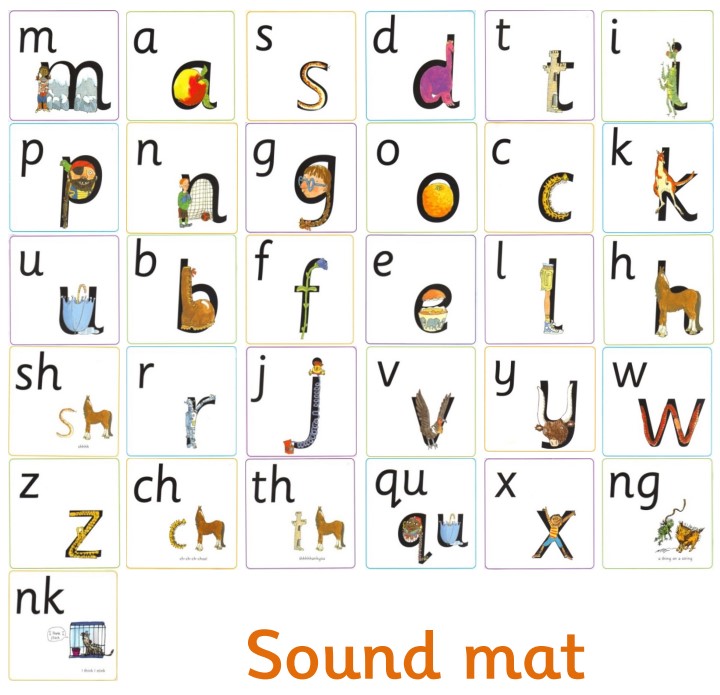
Set 2 Sounds
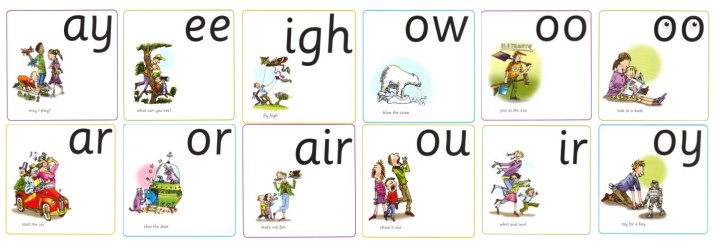
Set 3 Sounds
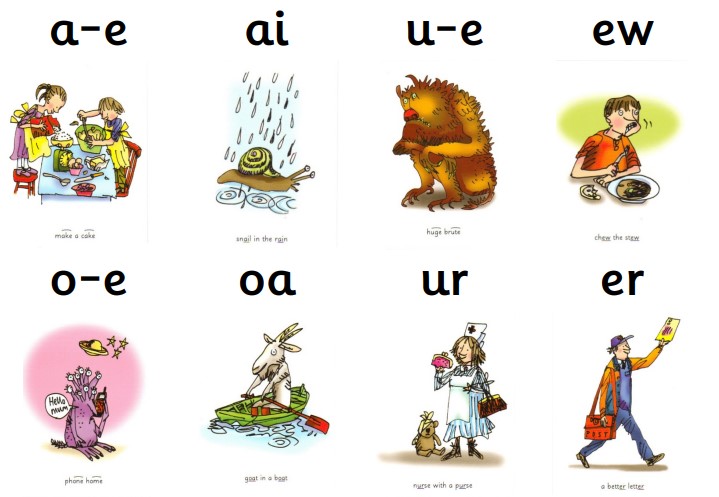
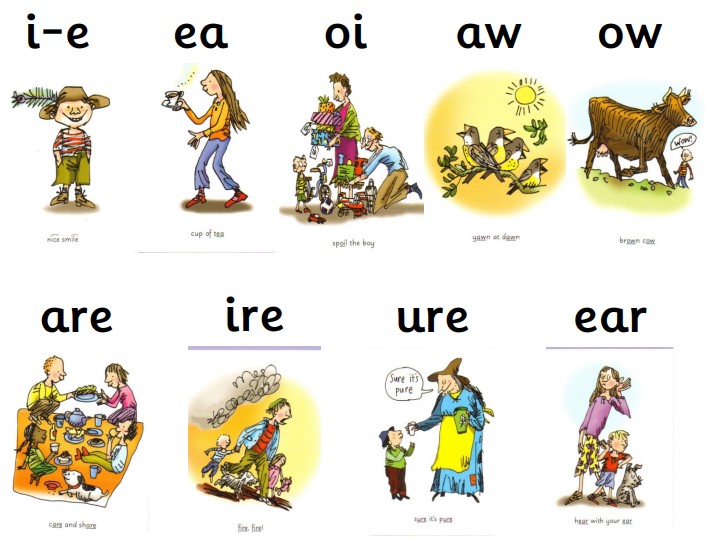
Fred Talk
At school we use a puppet called Fred who can only speak in sounds, not whole words. We call this Fred Talk. For example, Fred would say d-o-g, we would say dog. Your child is taught to hear sounds and blend them together in sequence to make a word.
Speed Sounds
When teaching your child phonics, we will use the term ‘speed sounds’, these are individual sounds which your child will learn how to read quickly and effortlessly as they progress through Reception, Year 1 and Year 2. Your child will be regularly assessed to ensure they are reaching their full potential and will receive additional booster sessions if appropriate.

Phoneme
Your child will learn a new sound every day accompanied by a handwriting rhyme which helps them to remember how t
o form the letter shape when writing it. If your child is in Nursery, they may learn a sound a week or over several days as it is important that your child learns how to distinguish sounds. A phoneme is the smallest unit of sound in speech, this may be one letter, or a group of two or three letters which make one sound. For example, if your child was learning the phoneme (sound) ‘a’, they would also learn the rhyme ’round the apple and down the leaf’ when they start to write their letter. In set 1, your child will learn 44 phonemes.
Video: Single sounds –
Coming soon…
Blending
As your child learns each sound (phoneme), they are taught how to blend the sounds together to make two and three letters words (CVC words, consonant, vowel, consonant such as the word dog). Your child will learn how to read real and nonsense words.
Green Words
Alongside this, your child wi
ll start to read ‘green’ words. ‘Green’ words are words which can be sounded out and blended like ‘dog’, ‘cat’.

Click here for Set 1 Green Words
Click here for Set 2 Green Words
Click here for Set 3 Green Words
Red Words
Having gained confidence sounding out green words, your child will be taught about ‘red’ words. These words are tricky words, words which can’t be sounded out phonetically like ‘to’ and ‘go’. Your child will start to learn the ‘red’ words I, the and my. They will also learn why these words are tricky and cannot be sounded out. I says it’s name as in the alphabet song whilst with the word ‘the’, we don’t say the ‘e’ and with ‘my’, the ‘y’ is pretending to be an I. As your child progresses through Reception and KS1 (Year 1 and Year 2), they will learn these ‘red’ words by sight.

Digraphs and Trigraphs
When the children have learnt the single sounds they begin to move on to two and three letter sounds these are called digraphs (2 letters making 1 sound like ‘ea’ in the word tea) and trigraphs (3 letters making 1 sound like ‘igh’ in the word light). Set 1 sounds include the digraphs ‘ch’, ‘sh’, ‘th’, ‘ng, ‘nk, and ‘qu’.
Video: Digraphs/trigraphs – Coming soon…
Fred Fingers
Fred Fingers are used for spelling. Your child is taught to sound out the word they are spelling and put up the correct number of fingers for the sounds they can hear in that word. For example: m-ee-t = 3 sounds = 3 fingers. When your child starts to write words, they will be taught to use their ‘Fred Fingers’:
Say the word.
Hold up correct number of Fred Fingers.
Palm facing you.
Say the word again.
Pinch the sounds. (Gently pinch each finger as you say the sound)
Write the sounds.
Add sound buttons/dashes.
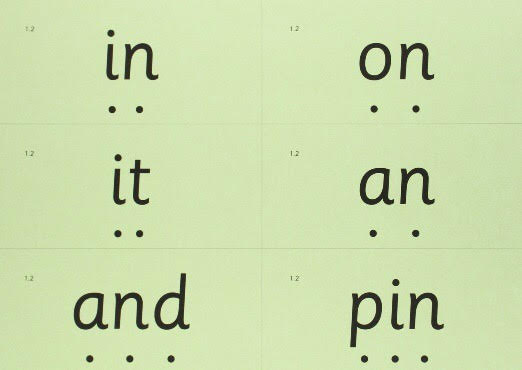
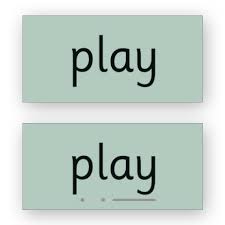
Sound Buttons and Dashes
Sound buttons are circles or spots that can be written underneath a sound to support reading. Your child will be taught to say the sound aloud as they touch the sound button. If reading a diagraph (two letters making one sound) or trigraph (three letters making one sound), your child will know that this sound is represented by a dash underneath the letters which make the sound. See above in the word play, ‘ay’ is a diagraph, so has the dash underneath.
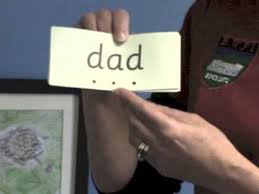
Fred in your head
Your child’s teacher will hold up a green word (close to their chest), giving your child time to mime the sounds, and will then push the word forward as a signal for your child to say the whole word (as opposed to blending individual sounds). This will be repeated over a period of time, until your child can say the word straight away. Your child will start off initially mouthing the sounds silently and then saying the whole word to saying the whole word straight away.
Video to come
Red Ditties
As your child gains confidence reading individual words, they will move onto reading sentences, then onto ‘ditties’. The Red Ditty books provide a bridge between your child reading simple words/sentences and reading short stories. Watch the video below on how to support your child with their reading book.


